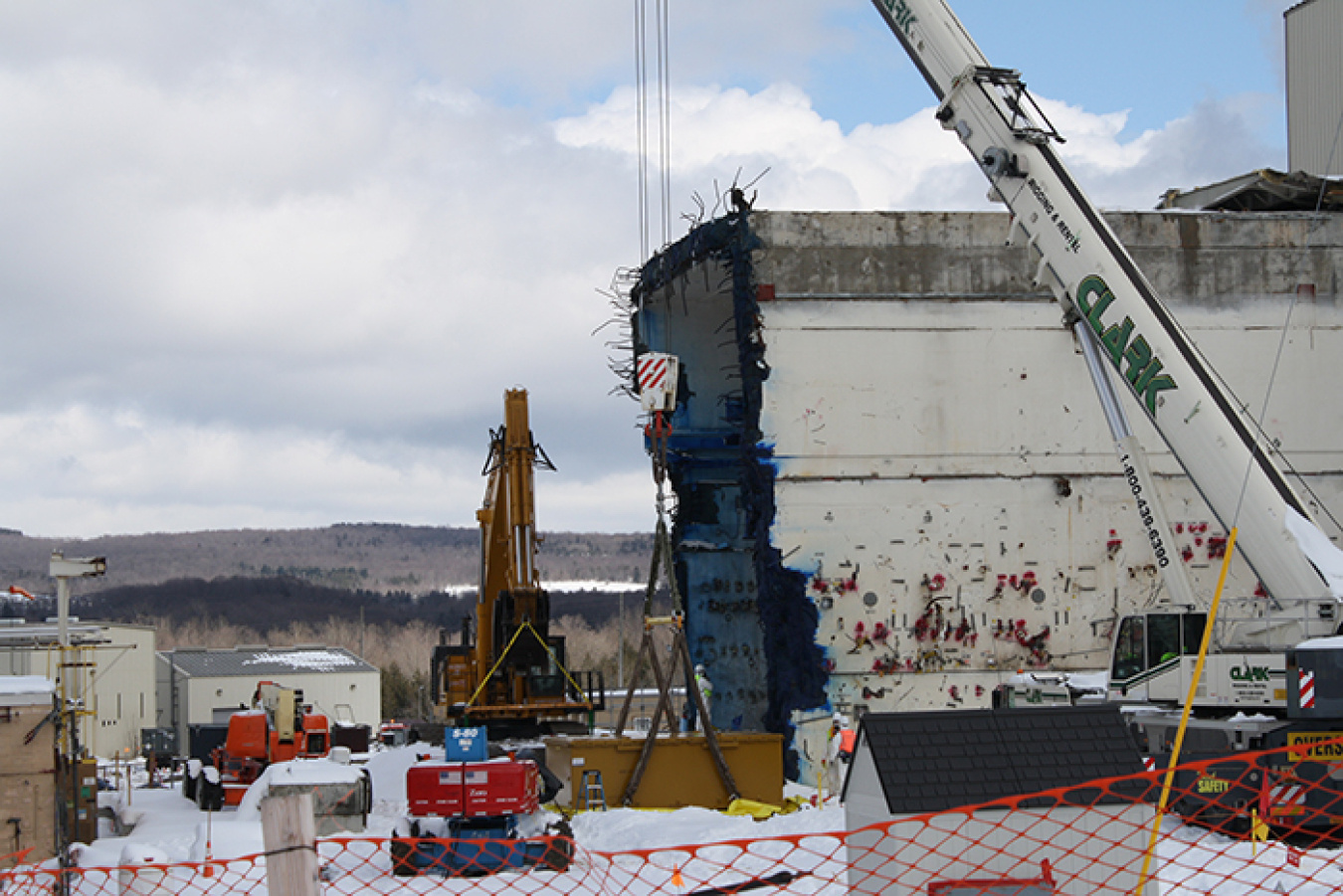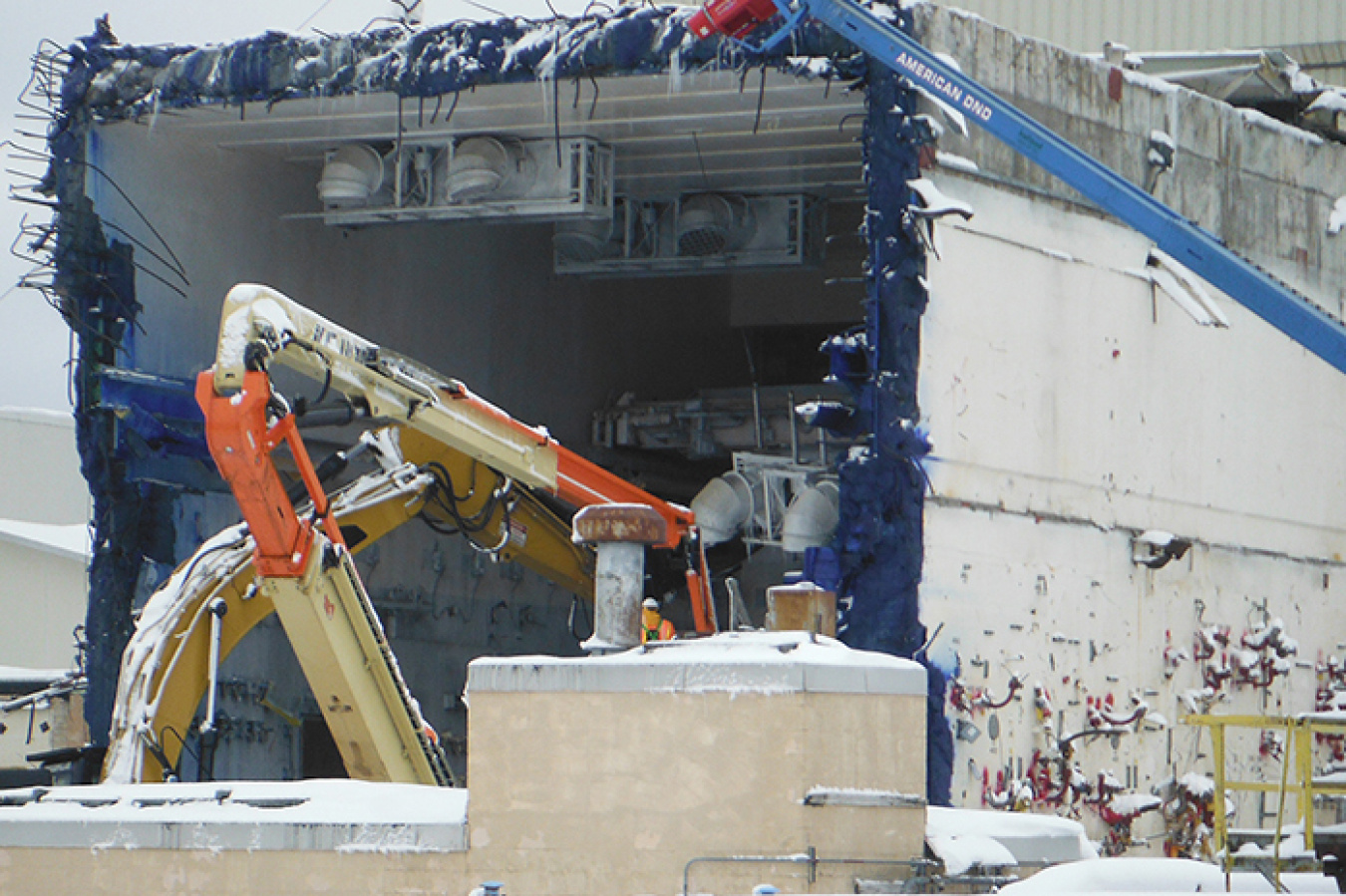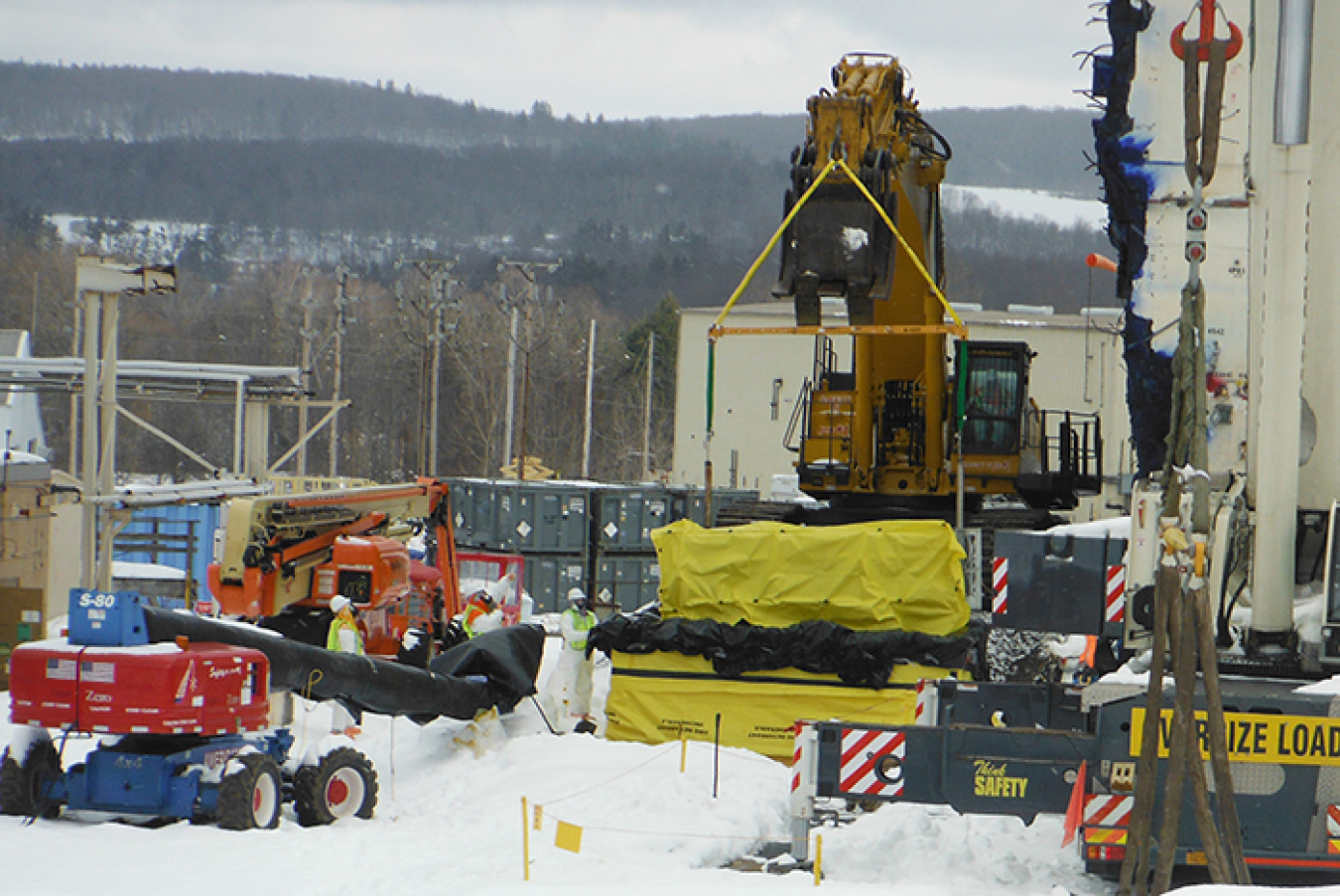Four Vitrification Facility hot cell coolers safely removed for packaging and shipment
Office of Environmental Management
March 20, 2018
WEST VALLEY, N.Y. – Four hot cell coolers weighing 7,188 pounds each were successfully removed from the Vitrification Facility at the West Valley Demonstration Project (WVDP) through extensive planning and engineering controls.
“This work was a significant accomplishment for our team,” said Jeff Bradford, president of CH2M HILL BWXT West Valley (CHBWV), EM's cleanup contractor at WVDP. “They completed this work safely and compliantly using a deliberate and methodical approach, along with lessons learned.”
Workers at WVDP removed in-cell coolers as part of demolition of the Vitrification Facility, one of two main buildings to be taken down at the site. That particular task was the highest remaining hazard associated with the Vitrification Facility.
“The CHBWV Team did an excellent job in their planning and execution of this high-hazard work evolution,” EM WVDP Director Bryan Bower said. “This paves the way for the workforce to continue with the demolition of the Vitrification Facility.”


On March 3, crews began lowering and removing the first cooler from the Vitrification Facility ceiling. From above the 50-foot-tall building, the cooler was attached to a 300-ton crane using roof penetrations designed for mechanical and electrical connections. Once connected, the cooler was lowered to the floor, where crews performed general size reductions, and additional contamination controls (fixatives and wrapping) were applied. On March 5, a large excavator was used to pick up the cooler and place it into an approved waste container.
The removal of the first cooler was analyzed for lessons learned that were then applied to the task of removing the remaining coolers from the facility and packaging them into waste boxes.
The Vitrification Facility produced 278, 10-foot-tall canisters of vitrified high-level waste between 1996 through 2002. It was one of only two vitrification facilities to operate in the United States. The facility’s in-cell cooling system was an integral part of the operation. The coolers removed heat during normal operations and transferred that heat through a chilled water system.

